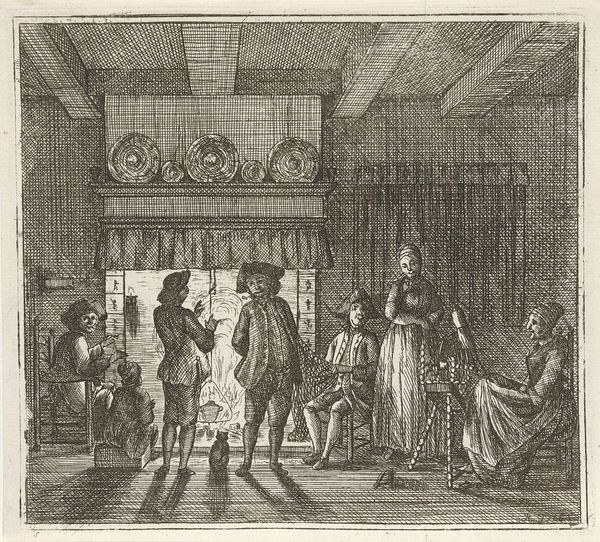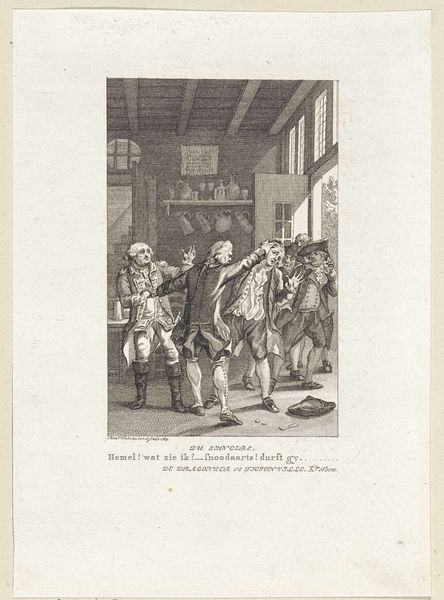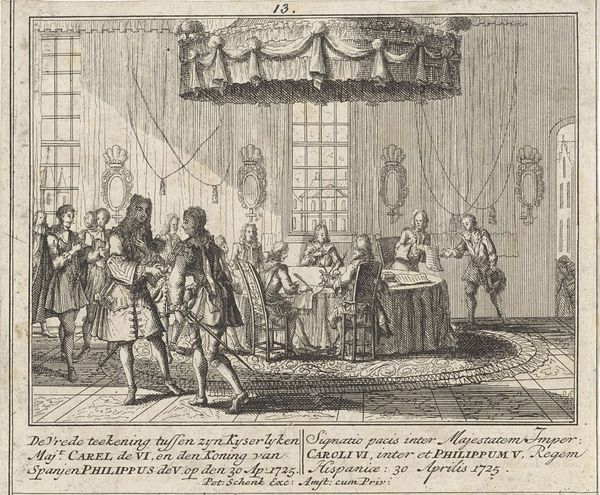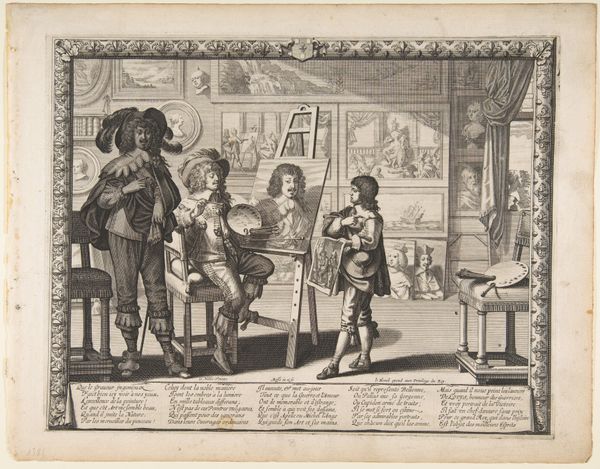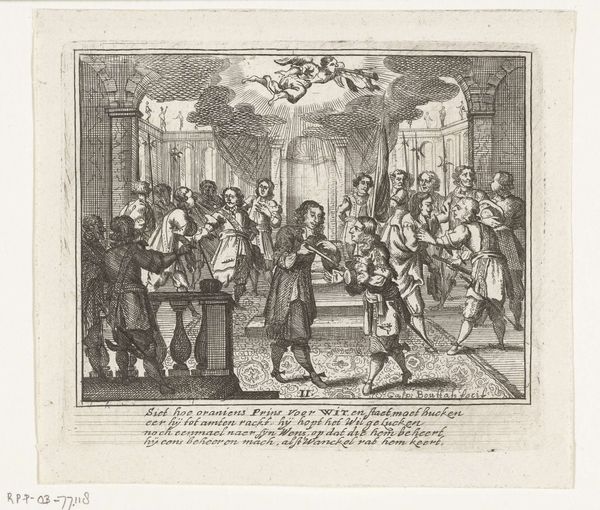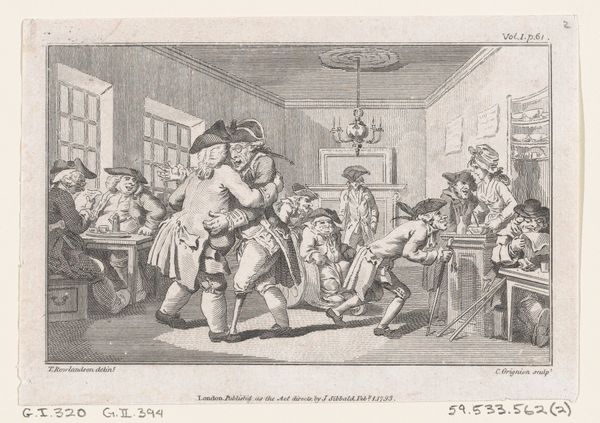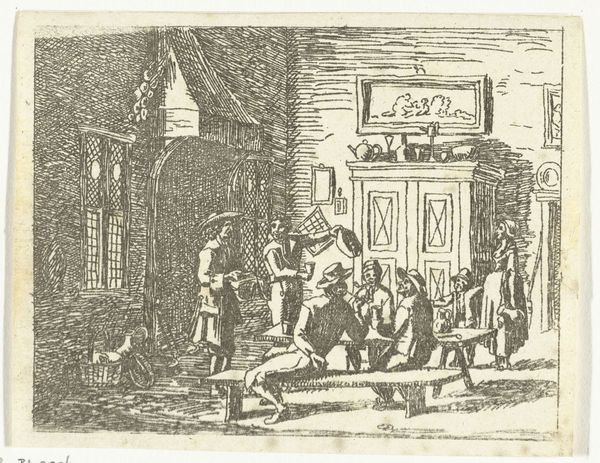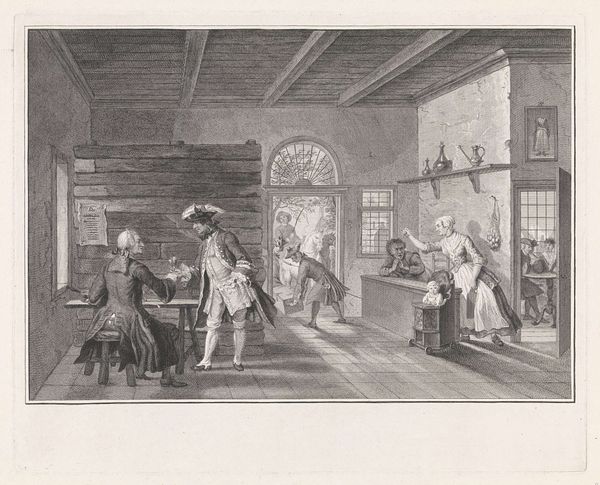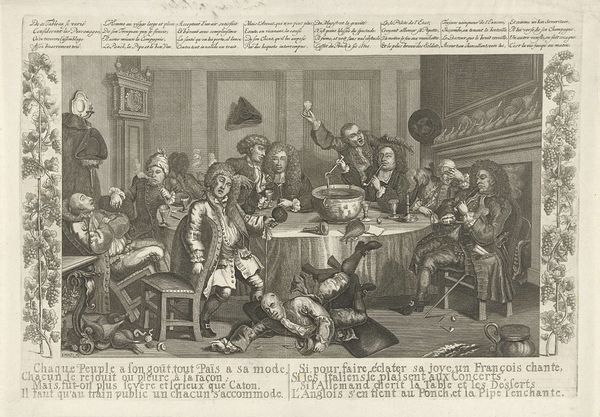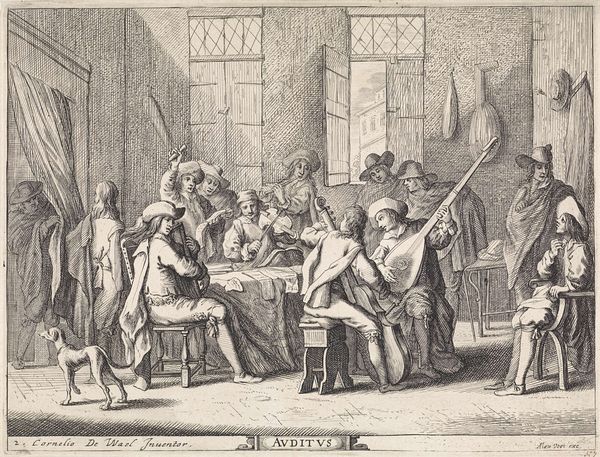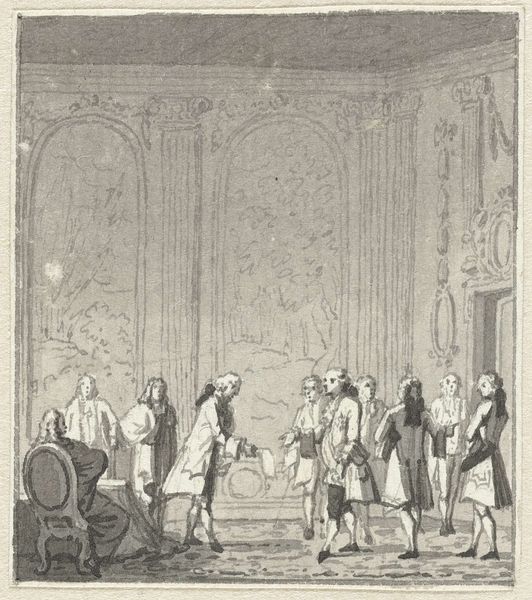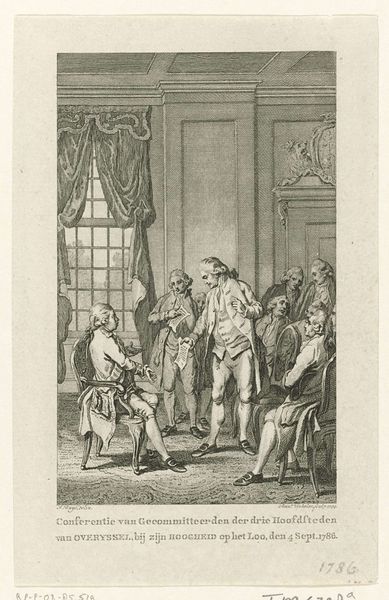
Dimensions: height 143 mm, width 157 mm
Copyright: Rijks Museum: Open Domain
Rienk Jelgerhuis made this print of smoking men sometime in the 18th century using etching, a printmaking technique rooted in craft and industry. Here, a metal plate is coated with a waxy, acid-resistant substance called a ground, and the artist scratches an image into this ground with a needle. When the plate is immersed in acid, the exposed lines are etched into the metal. This process is repeated until the desired depth of line is achieved, allowing the artist to create areas of tone, and then printed onto paper. Look closely and you will see the distinctive linear quality of the print, and the hatching used to describe form. Etching was often used to create multiple copies of an image, making art more accessible to a wider audience. In this case, Jelgerhuis shows a gentlemen's smoking room. It’s a study in masculine social ritual, and the kind of scene that could be reproduced in quantity and sold as a commodity. Considering the materials, making, and social context of "Interior with Smoking Men" invites us to look beyond the image itself. It asks how the processes of production and consumption shape our understanding of art, challenging any divide between fine art and everyday craft.
Comments
No comments
Be the first to comment and join the conversation on the ultimate creative platform.
